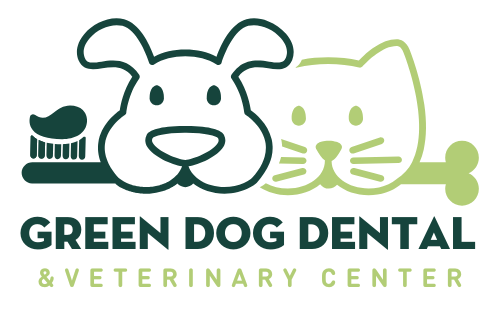
Gum disease is remarkably prevalent in dogs and at Green Dog Dental we see it all the time. And if you stop to think about it, it’s really not very surprising. While dogs eat much less sugar than most human beings do (which is one of the biggest causes of dental disease in humans), it’s pretty rare that their teeth get brushed every single day like ours do.
WOULD YOU ONLY BRUSH YOUR TEETH ONCE A WEEK?
What would your mouth look like if you brushed your teeth only once a week, or, in some cases, never? Gum and oral diseases can cause all sorts of health problems, and not just in your dog’s mouth.
It is not all about fresh breath and pearly white teeth: advanced periodontal disease can cause sepsis, bone infections, heart disease, heart valve infections, high blood pressure, kidney problems, and liver abscesses.
THE BASICS OF ORAL HYGIENE FOR YOUR DOG
But in order to take proper care of your dog’s teeth, it’s important to know the basics or canine oral hygiene. Just like human beings, failing to clean your dog’s teeth will cause tartar to build up on the surface of their teeth and around their gum line.
Tartar is a white substance that is caused by a bacteria that resides in your dog’s mouth, plaque. When plaque builds up it creates a biofilm.
If you leave this biofilm on for too long, it can harden and become extremely difficult to remove. Allowing tartar to build up on your dog’s teeth is likely to cause gum inflammation, pain, redness and even infection. Since your dog can’t tell you if their teeth feel grimy or their gums hurt, you’ll need to read their (often very subtle) signs. A product like smileSPRAY or purrfectSMILE is designed to remove food before it can cause this problem.
SIGNS OF A DENTAL PROBLEM
Red or bleeding gums is another sign that your dog may have a toothache. Gum health and tooth health are intrinsically connected, and it’s unusual for a dog or cat to have a toothache with perfectly healthy gums. If your dog or cat’s gums are suddenly reddened, or you notice bleeding, that’s a clue that they may be experiencing oral pain.
You may also notice excessive drooling. Suddenly drooling, or in the case of animals that are always a little slobbery, drooling more than usual, is your pet’s way of saying “my mouth hurts”.
SOMETIMES THE ISSUE IS NOT VISIBLE
Even if you take a peek into their mouth and don’t see anything immediately wrong, there are plenty of dental issues (such as a cracked tooth or abscess) that may not be immediately apparent but can cause a great deal of pain.
In fact, even seasoned veterinarians often rely on dental x-rays to diagnose dental problems. Ignoring oral pain is never a good idea.
SEE A PROBLEM? DON'T WAIT TO SEE A VET!
Tooth pain is terrible enough, but gum and dental disease can also lead to systemic problems in other parts of your pet’s body. If you suspect your dog or cat has a toothache, it’s best to bring them to their veterinarian for a check-up to identify the problem and fix it before it gets worse or begins to cause other problems.
